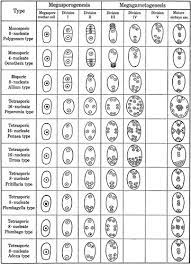Theories on the mechanism of
crossing over
There are many theories to
explain the mechanism of crossing over
1. Chiasma Type Theory:
This theory was proposed by Janssens. This
theory suggested that prior to crossing over, the chromosomes of each bivalent
geld plicated to form a tetrad. Crossing over occurs only between the
non-sister chromatids of a tetrad. In the diplotene stage, the nor sister
chromatids overlap with one another and form chiasma or point of contact. In
the chiasma, the chromatids break and they rejoin with the mutual exchange of
segments. The other two chromatids remain intact. This theory is known as
chiasma type theory.
2. The Breakage First Theory:
This theory was proposed by Muller. According
to this theory the non-sister chromatids of homologous chromosomes first break
off without crossing over. The broken segments rejoin to form new combinations.
3. The Contact First Theory:
This theory was proposed by Serebrovsky.
According to this theory, the non-sister chromatids first touch and cross each
other. The breakage occurs at the points of contact of the chromatids. The
broken segments rejoin to form new combinations.
4.
Strain or Torsion Theory:
This theory was proposed by Darlington.
According to this theory, the homologous chromosomes (bivalent) are
relationally coiled around each other in a specific fashion. The chromosomes duplicate and the two sister
chromatids in each chromosome are also coiled one around the other. When the
chromosomes start separating their relational coiling unravel in on direction
and the sister chromatids unravel in the opposite direction The repulsion
causes torsion, which exerts pressure or strain on the weak non-sister
chromatids. The non-sister chromatids break at the point of contact and broken
ends rejoin and form chiasma.
5. Differential Contraction Theory:
Huskin suggested that tension set up by
differential contraction after pairing may cause breaks at overlap. Separation
starts from the centromere towards the ends like a zip. This separation is
called terminalization. This leads to the separation of homologous chromosomes.
Based upon the number of chiasmata formed,
crossing be classified into three types. They are as follows:
1. Single Crossing Over:
In this type, only one chiasma is formed. Only
one chromatid of each chromosome is involved in single crossing over.
2. Double Crossing Over:
In this type, two chiasmata are formed. The
chiasmata may formed between the same chromatids or between different chromatids.
Thus, two or three or all the four chromatids of the homologous chromosomes may
be involved in the process of double crossing over
a. Two strand double crossing over:
In this
type, the two non-sister chromatids are involved at both the crossing over
points Here two chromatids are non-cross overs and maintain the parent
combination of genes.
b. Three strand double crossing overs:
In this
type, the chromatids are involved in the formation of chiasmata. Here three
chromatids exchange their parts and one chromatid is non-cross
c. Four strand
double crossing overs:
In this type, the four chromatids are involved in the
formation of chiasmata.
3. Multiple Crossing Over:
In this type, more than two chiasmata are
formed. Multiple crossing over is very rare because of interference in crossing
over.
Reference :
Genetics - R.PMeyan - Saras publication , Nagarcovil.







Comments